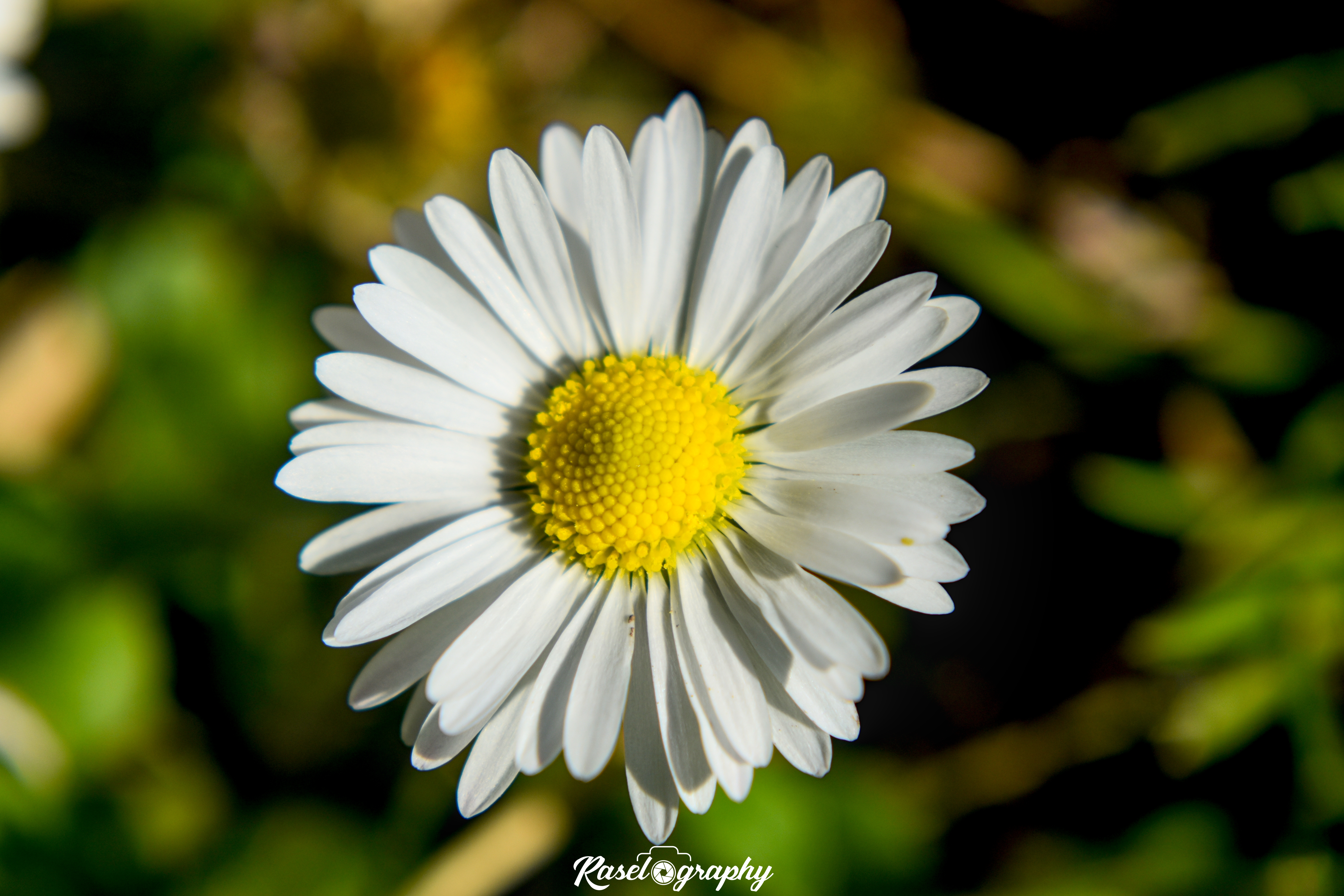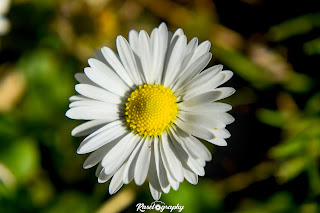Common Daisy - Bellis perennis
Posted at 15th- Sep- 2020 Time 05: 46 am
Views 13208 times

[Device used: Nikon D60; Pakenham /2020]
The common daisy is everywhere. This grows as weed. Covered my backyard. Looks beautiful too. Sometimes I leave them to grow and don't mown my lawn. They attracts lots of bees which is good for my garden as well.
Bellis perennis (Common Daisy) - Bellis, the genus name, comes from the Latin bella meaning beautiful. The specific epithet perennis means, just as it sounds, perennial.
Flowers of Bellis perennis first appear in early spring and the plants continues blooming all through summer and into autumn. In May these robust wildflowers are usually at their very best.[3]
Belongs to the Asteraceae family and is technically known as the bellis perennis. It is a native species of Europe and temperate Asian regions. Historically, it has also been called bruisewort and woundwort. It is a long-lived perennial plant that gardeners can expect to see flower for several years in a row and it can reproduce itself easily by either seed distribution or by dividing after it has flowered. It’s not only easy to cultivate, but also very reliable; gardeners who invest in daisies can count on seeing their bright, joyous colours year in and year out.
The common daisy is also an especially hardy plant and will thrive in any reasonably well-drained soil, provided the ambient temperature is generally moderate. In the wild, it can be found in practically any area of grassland. Like the other plants available on our rolls of MeadowMat, the common daisy requires very little maintenance; you can leave it to grow on its own without worrying!
In addition to being gorgeous and hardy, the common daisy can also attract pollinating insects to your garden and the birds that feed on them. While the daisy doesn’t have a special relationship with one particular species of fauna, it can help improve the overall biodiversity of your garden. [1]
Other related plants are also known by the name daisy, but Bellis perennis is mostly regarded as the archetypal species.
Other Common Names: Common daisy, garden daisy, English daisy, meadow daisy, bruisewort, tusindfryd (Danish), chiribita (Spanish), paquerette vivace (French), Gänseblümchen (German).
Plant Parts Used: It is primarily the fresh or dried flower heads that are used as a medicine, but the leaves can also be used.
Health Benefits and Uses of Daisy
Daisies contain essential oil, tannins, mucous substances, flavonoids, bitter substances, organic acids, resins, and inulin. The active ingredients are found in all parts of the plant.
Daisy has anti-inflammatory and mild astringent properties and has been used internally, in tea form, as an herbal remedy for the common cold, bronchitis and other inflammation of the upper respiratory tract.
The herb may be used for loss of appetite as it has a stimulating effect on the digestion system and it has been used as a treatment for many ailments of the digestive tract, such as gastritis, diarrhea, liver and gallbladder complaints and mild constipation.
Daisies have been used traditionally for painful menstruation, cystitis and other inflammations of the urinary tract. Additionally, it may have its uses as a natural treatment for atopic dermatitis, gout, and chronic rheumatic conditions.
The plant is known for its healing properties and can be used topically on small wounds, sores, and scratches to speed up the healing process.
In addition, it has been used externally for dermatitis, rash, eczema, bruises, and boils.
A tincture made from the herb can be used for acne, and as a mouthwash or a gargle, it may be used as a remedy for mouth inflammation and sore throat. Also, chewing on the fresh leaves might be helpful as a relief for mouth ulcers.
In folk medicine, it was often recommended to eat the fresh leaves to stimulate nutrition uptake, due to the bitter substances found in the herb.
The fresh leaves, flowers, buds, and petals have a pleasant taste and can be used in salads or added to soups. Furthermore, the flower heads can be used in vinegar and as a substitute for capers.
Dosage and Administration
Herbal tea can be made by using two teaspoons of dried flower heads to one cup of boiling water and then allowing it to soak for 10 minutes before it is strained.
The recommended dose is 3 small cups daily.[2]


